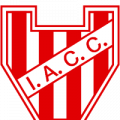The Summer Olympic Games are always a major landmark on the sporting calendar. Every four years athletes from around the world have a chance to make a name for themselves on the world stage. The modern Olympics date back to 1896 when the games were staged in Athens, Greece. When people think of the Olympics many instantly picture athletics, cycling or swimming events. The story of Usain Bolt breaking world records in the 100 and 200 metres in 2008 will be told for many years to come, and other memorable past Olympians include Michael Johnson who won the 200 and 400 metres in 1996 at Atlanta, Michael Phelps who took home 8 gold medals from Beijing in 2008 and Sir Steve Redgrave who won gold at five consecutive games from 1984 – 2000.
Tennis, however, has not always been a part of the rich Olympic history; it was dropped from the Olympics after the 1924 games and only brought back in 1988 at Seoul. It is not a sport that many would associate with the Olympics, it is usually a sidenote with other sports getting all the headlines and a lot more media coverage. More and more sports are being added to the Olympics, for example golf is being reinstated for 2016. Some say that the magic of the Olympics is being lost with too many sports being added and with marketing reaching record highs. Put simply does tennis belong at the Olympics?
Currently on the ATP and WTA tours for men and women, there is already a mass of tournaments that span across the globe. For the men this starts in Australia in January and goes all the way through to London for the World Tour finals in November, whereas the women play until the end of October finishing in Istanbul. This schedule is hectic with players barely getting a week off all year. There is a tournament every week which players have to play in to gain ranking points so that they can be high enough in the rankings to gain automatic entry to the more prestigious tournaments. The tour schedule has drawn criticism from many players, most notably Rafael Nadal and Andy Murray. Nadal recently grew so frustrated with the ATP that he resigned from his position as vice president on the player’s council as he wanted a new ranking system that would make it easier for players to withdraw from events due to injuries and fatigue. The evidence backs up the claims of the players that the schedule is too packed; at the 2011 US Open eleven men retired injured from matches; a new record. By the 6th of May this year Rafael Nadal has already spent 3684 minutes on court competing in tournaments, Djokovic has racked up 3218 minutes, Murray has clocked 2999 minutes and Federer completes the top four with 2302 minutes. What makes this even more surprising is that Nadal did not compete at a tournament for the whole of February. These hours are on top of hundreds spent on the practice courts which places constant strain on the bodies of the top players. Add to this mix participation in The Olympic Games and the schedule for the players is close to bursting.
However, recently the elite players have expressed the view that performing at the Olympics is important to them. Tennis is such an individual sport that they rarely get a chance to represent their country and feel like part of a team. Andy Murray was quoted recently as saying "Tennis at the Olympics has become a big deal” and he says it is “one of the best experiences I've had as an athlete”. Top players can also taste this team spirit in the Davis or the Fed Cup. Indeed Djokovic won the Davis Cup in 2010 with Serbia and he cites this as the launchpad for his incredible 2011 season that saw him win 3 of the 4 grand slams and only lose a handful of matches all year. However since then Djokovic has not made the Davis Cup his priority, he recently withdrew from their quarter final match against the Czech Republic; on this occasion resting himself before tackling the clay court season took precedent over representing his country.
In 2004 ranking points were made available to players if they did well at the Olympics, providing more motivation for them. The winner that year was a big surprise; Nicholas Massu of Chile took home the gold medal, with none of the top 9 seeds making the semi-finals. This raised the question again of whether the top players took the Olympics as seriously as the Grand Slams? Most people would say that a gold medal for your country should be all the motivation you need, but the bottom line is that when people look back at the history of tennis champions they immediately go to Grand Slam winners. For other athletes the Olympic Games is the pinnacle of four years training, whereas for tennis players it is yet another tournament added to an already busy schedule. Tennis players therefore now face a dilemma over the addition of the Olympics to the calendar – do they ‘go for gold’ but in the process miss another tournament or risk injury to themselves; or miss the Olympics to concentrate on the tour events?
The crux of the matter is that tennis simply doesn’t have the history of other sports at the Olympics and with the schedule for the players it makes it very hard for them to change this. The players may want to compete and give their all at the Games but they are being pushed to breaking point already. With so much tennis on their calendar they have to make a sacrifice somewhere down the line and some players are not prepared to do that. The schedule needs to be looked at, especially in an Olympic year to accommodate the Games. However in the current age of sponsorship the ATP is highly reluctant to drop tournaments and forfeit income, which leaves the players with the dilemma of whether they want to give 100% to obtain Olympic glory or save themselves for a Grand Slam. Most people argue that if winning a gold medal is not the highest accolade for your sport then it shouldn’t be at the Olympics. The current generation of tennis players may be trying to change that but will their bodies allow them to?






































